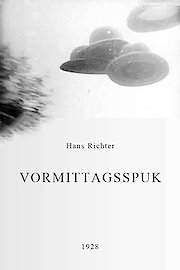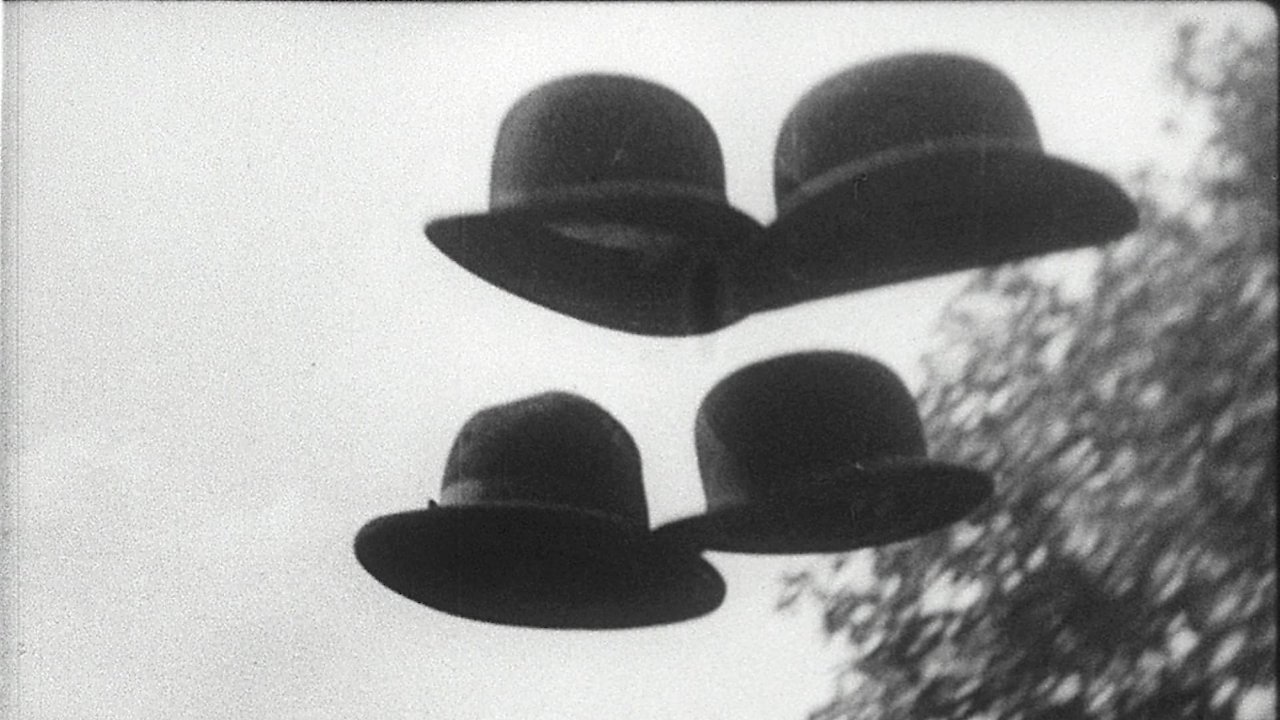-
Genres
-
CastWerner GraeffWalter GronostayPaul Hindemith
-
DirectorHans Richter
-
Release Date1928
-
Runtime6 min
-
IMDB Rating7.1 (2,006)

Ghosts Before Breakfast, a 1928 avant-garde silent film directed by Hans Richter, is a fascinating exploration of the genre of experimental cinema. Its surreal imagery and disjointed narrative make it a unique and challenging viewing experience for audiences, even today. The film's title references the ghosts or shadows that seem to haunt the everyday world, and the film itself is a kind of ghostly apparition that flits through the viewer's consciousness like a dream.
The film opens with a quote from Maeterlinck's play "The Intruder", which sets the stage for the strange and unsettling events that are about to unfold. We are then introduced to a group of objects - a hat, a teapot, a spoon, a key, and so on - that are brought to life by the magic of cinema. These objects move and dance on their own, as if they have taken on a life of their own. We see a spoon giving birth to a smaller spoon, a hat blowing away in the wind, and a key that seems to unlock a hidden world.
The objects soon take on more human-like qualities, and we see them interacting with each other and with the world around them. One of the key themes of the film is the concept of duality - objects are constantly transforming into new shapes and forms, and what appears to be one thing may in fact be something else entirely. This sense of fluidity and transformation is at the very heart of the film, and it is what makes it so mesmerizing.
As the film progresses, the objects take on more and more human-like characteristics, and we see them engaging in a kind of surreal pantomime. They chase each other, flirt with one another, and engage in a variety of strange and often comical antics. At times, the film feels like a dizzying collage of disconnected images, but there is a method to its madness. Each scene is carefully choreographed and orchestrated, and the result is a haunting and deeply poetic work of art.
One of the most striking aspects of Ghosts Before Breakfast is its use of shadow and light. The film plays with our perception of reality, using stark contrasts and bold angles to create a sense of disorientation and unreality. The shadows that the objects cast often take on a life of their own, dancing and moving independent of their creators. This use of shadow is both eerie and playful, and it adds an extra layer of depth to the film's already complex visual language.
The film's score, composed by Paul Hindemith, is another standout element. Hindemith's music is as disorienting and unpredictable as the film itself, and it adds an additional layer of emotional resonance to the proceedings. The score is often discordant and jarring, using unconventional instrumentation to create a sense of unease and tension. Combined with the film's unsettling imagery, the music creates an overall effect that is both beautiful and unsettling.
Overall, Ghosts Before Breakfast is a true masterpiece of experimental cinema. Its use of surreal imagery, disorienting editing, and innovative visual effects make it a landmark work that continues to influence filmmakers and artists to this day. Even almost a century after its release, the film feels fresh and relevant, a testament to the power and profundity of Richter's vision. If you are a fan of innovative cinema, or if you simply enjoy being challenged and surprised by what you see on screen, Ghosts Before Breakfast is a must-see.
